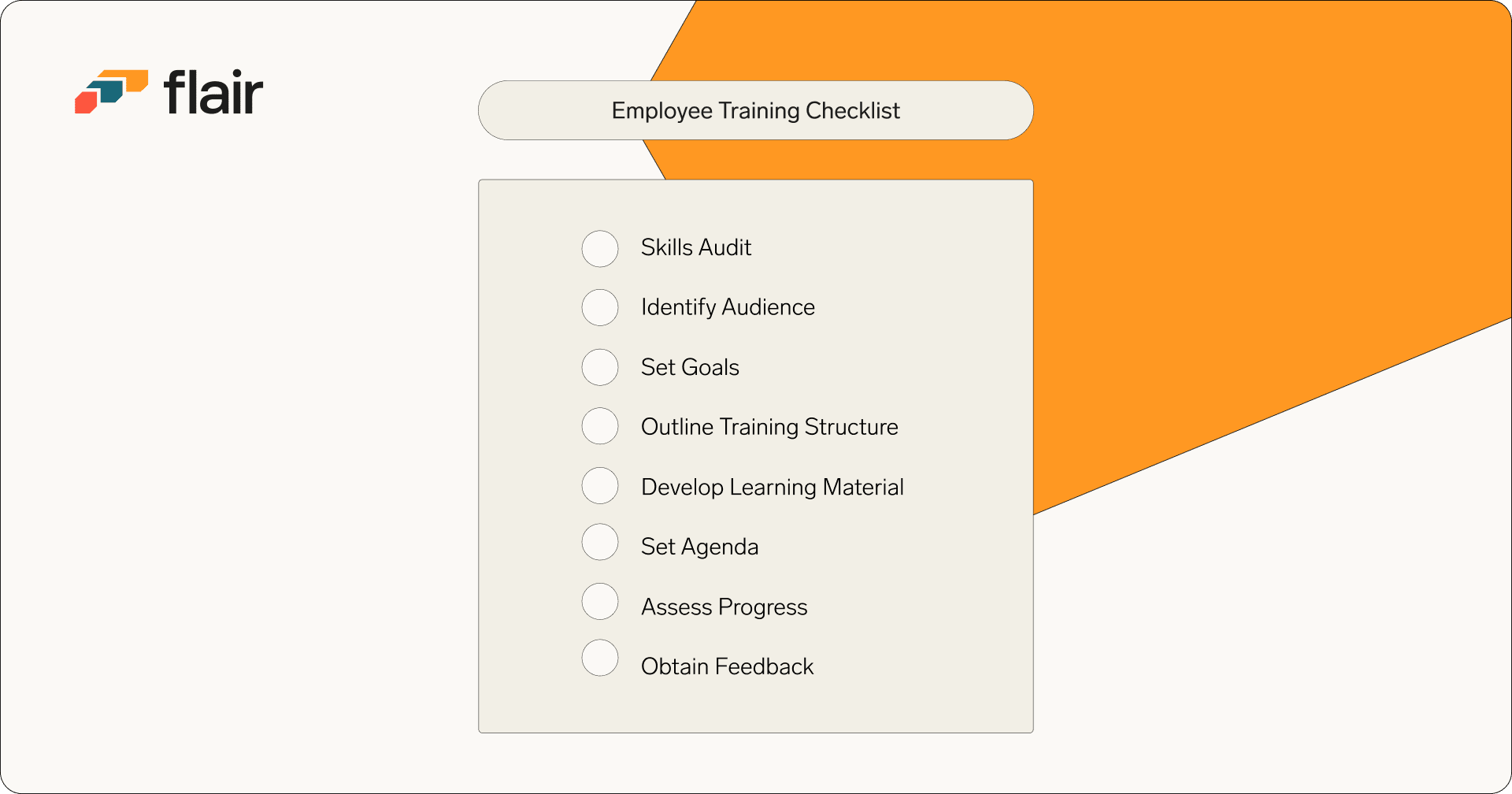Origins to Innovation: Cloud Computing's Impact on HR
Do you know why it's called cloud computing and are you aware of the benefits to HR?
- 06 Jun 2024
- Max 11 min read
The Number One HR Solution on Salesforce
Employee training is vital to the success of any organization. Investing time and money in staff education can energize an entire organization. Let’s see why employee training can be the difference between average and excellence.
Investing in staff training can yield a powerful return. It's not merely about teaching employees the basics of their new role, but rather equipping them with the knowledge and skills to thrive amidst challenging circumstances.
No matter the industry or the business, training helps ensure that employees are ready to achieve. Staff need to be equipped with soft skills and the know-how to provide quality services, promote productivity, and drive innovation. But planning ahead for employee training can be a daunting task.
There is a lot to consider. Now more than ever, businesses need to develop comprehensive strategies that prepare their workforce for new challenges while also addressing existing needs.
In this blog post, we'll explore how effective planning can benefit your business by helping you develop powerful employee training solutions that meet current and future goals.
We’ll look at practical tips on integrating technology into an employee training plan. Best practices for developing onboarding materials tailored to newcomers will also feature below. So make sure to keep scrolling.
By utilizing these techniques and approaches, you’ll be able to create the ideal training structure. After all, empowered employees with the skills and tools to do their job will contribute towards personal and organizational growth.

But first, let’s take a closer look at what employers and employees stand to benefit from regular, well-structured training initiatives.
Upskill Staff: Investing in the development of staff and further education will ultimately ensure that a business has access to a highly qualified workforce. The aim of any business should be to keep improving and avoid stagnating resources. Staff members are a valuable resource, one that can step up a level through education. Organizations that develop a path for hands-on learning for employees can often boost business goals and fill skills gaps through soft skills training.
Improved Employee Performance: One of the primary benefits of employee training is that it can lead to a greater level of job performance. The right training can provide employees with the knowledge and skills they need to complete their jobs more effectively. Additionally, training can help employees to better understand their job duties and how they fit into the overall organization. Besides, a proper training can educate employees about how to use different software, including eprocurement software, so they can efficiently and effectively utilize the software in their day-to-day tasks.
Entice New Recruits: A graduate or worker looking to get ahead in a specific industry is more likely to join an employer that will open doors in terms of development opportunities. Not everything is about wages, and if a company can provide a solid learning structure then that can be a big pull factor for any top talent. According to recent research by McKinsey Global Institute, companies that establish themselves as great learning organizations are “magnets for talent”.
Reduce Employee Turnover: Employees that feel valued are much more likely to stick around rather than seek pastures new. According to a Lorman study, retention rates rise 30-50% for companies with strong learning cultures. When staff members are given the opportunity to excel, they often feel more loyalty toward their employer. Additionally, trained employees may be less likely to be fired or laid off due to poor performance, as they will have the skills and knowledge necessary to do their jobs well.
Increase Productivity: A well-trained team is essential for organizations looking to unlock their full potential and achieve maximum benefit from operations. Putting time and money towards employee training programs can have the knock-on effect of making processes smoother.
Reduce Mistakes and Accidents: Another benefit of employee training is that it can help to reduce accidents and injuries in the workplace. Employees who are properly trained are more likely to be aware of potential hazards and know how to avoid them. Furthermore, trained employees tend to follow safety procedures and use proper safety equipment.
Job Satisfaction: Providing employees with the right training is essential to job satisfaction. Nurturing their skills and abilities helps keep morale high, creating an environment in which productivity thrives. By investing in proper employee education, businesses can ensure success and build a company culture that people enjoy. A LinkedIn Learning study stated that “94% of employees say that they would stay at a company longer if it invested in their career development.”
Not every training process will be the same. Of course, the needs of an HR management company will be different from that of an engineering firm. But by considering the following core points, it is possible for anyone to plan out job training and begin a process of career development within their organization.
Identify Audience: First off, with careful consideration, identify the team members who could benefit from additional training and determine their necessary skills to develop. It’s important to know which employees require competency training or new skills.
Think about: How will staff benefit, what are their training needs, and what results will these learning opportunities bring to the business? Don’t forget to assess what skills are already available in-house. It can be really beneficial to choose staff or training managers that will lead a learning program or session.
Set Goals: Make a list of the desired training outcomes. Goals provide a vital foundation for the growth and development of any successful training program. With clearly defined objectives, organizations can easily measure progress while offering employees meaningful guidance to obtain key results.
Outline Structure: Pinpointing the ideal medium for communicating new information and training is imperative. Will training be internal or outsourced to another organization? Do you plan to train individuals or will the training program be a group exercise? The structure of any training should be defined ahead of time.
Develop Learning Material: To ensure employees stay ahead of the curve, they need to be trained with up-to-date material. Arm them with valuable knowledge and insights that will advance their skillset. Some common learning materials include company handbooks, online courses, instructional videos, assessments, procedure documents, and recommended readings.
Set Agenda: Outline a time, duration, and schedule for your training. Strategically plan out your learning process for maximum impact. Organizing objectives and progress measurements can help trainers ensure that their programs foster both knowledge acquisition and skill development for trainees.
Consider Remote E-Learning: In lieu of office training days, e-learning can be an innovative way to stay connected with coworkers and learn skills from the comfort of your own home or remote workspace.
Online training can provide flexibility for remote workers, allowing them to access high-quality education often at their own pace. With e-learning solutions like online seminars, simulations, and video conferencing calls, employees are able to get up-to-date resources without needing to be in any one location – making it perfect for teams scattered around the world. At flair, we’re big proponents of asynchronous work. As such we’re always finding new online courses and planning training sessions to help staff. We have even developed our own e-learning resource for clients – The Learning Hub.
Recognize Participation: Engagement in training by employees takes time and effort. It can often be in parallel to projects and other day-to-day tasks. So it’s worthwhile to recognize people’s efforts in taking part in new courses or development programs.
Training programs that include recognized certificates of completion can encourage people to take part. Meanwhile, certificates of completion that are recognized in-house or outside an organization present value to employees. For example, a certificate showing completion of a first aid course, a Hubspot marketing seminar, a Semrush Academy course, or Human Resources Certification Institute skills training can look great on a CV.

It’s not always easy to onboard or train new hires in a new work environment. Remote working presents its own challenges, too. Let’s check out some tips to help train new employees on the job.
Develop Onboarding Templates: Onboarding templates serve to quickly and efficiently introduce new employees into their roles. For example, at flair, we use our customizable Workflows feature to build intuitive onboarding templates that enable the tracking of progress by other staff mentors or management.
By providing template resources that cover all the necessary information for new learners in your organization, you can ensure smooth onboarding processes with an economical investment of time.
Mentorships: Following up training programs with a mentorship can be a great accompaniment to any learning experience. An office mentorship is an invaluable opportunity for a more experienced individual to share their knowledge with someone just beginning their professional journey. It serves as guidance and support, enabling the latter to gain valuable experience in the workplace while navigating potentially uncharted territory.
Check-Ins: Onboarding Check-Ins provide essential support and guidance to new employees. They create an atmosphere of encouragement, helping workers transition smoothly into the workplace.
Enable Feedback: Understanding what information or training was communicated well and what needs work is important for progress. Create a space for trainees to give feedback. This could be through the medium of an in-person meeting or even in the form of an employee engagement survey like the customizable engagement tools offered by flair.
Variety is the spice of life and so mixing up your training programs with new technology or methods can be a great way to keep employees engaged. Check out some ideas below for keeping your training program or seminars fresh.
Explore Microlearning: The term has its origins in ancient Greece and was later popularized thanks to Hector Correa’s The Economics of Human Resources book and the advent of online culture. And it’s certainly useful. Microlearning can be an efficient learning strategy where short bursts of highly focused training materials are used in succession over time. With microlearning, employees rapidly absorb information and gain greater knowledge retention. Perhaps a good example of microlearning in recent times is the language learning app, Duolingo. The idea is to not frazzle the learner. Break down learning into bite-size or manageable daily tasks.
Video Conferencing Tools: The explosion of video conferencing options has been a game changer, perhaps as a reaction to many people moving towards a remote work lifestyle. Software like Zoom, Microsoft Teams, and Webex has made conducting meetings or training seminars more engaging and less dull. They incorporate neat tools that allow people to interact onscreen. What’s more, employees can participate in training sessions from anywhere in the world as long as they have an internet connection.
Try Virtual Reality: It’s all about the metaverse these days. Or at least, that’s how it seems. Already companies such as Accenture are onboarding and training staff using virtual reality portals and avatars. Simulations aren’t a new thing either. But the latest VR tech is certainly more agile and in many cases affordable than earlier iterations.
Try getting creative with immersive tech like the HP Reverb or HTV Vive Pro 2 headsets. Companies such as Walmart, Bank of America, and BMW use VR headsets to train frontline staff. The novelty of doing almost the impossible in a virtual world could be an added bonus.
Gamification: Mixing up training methods can help with employee learning. Leveraging the power of game mechanics, work training can be transformed into an engaging and enjoyable experience. By integrating elements such as rewards systems, leaderboards, and competition dynamics, employees are rewarded for their achievements while having fun learning new skill sets.
Online Libraries: Educational resources on the web or online training repositories work really well in the epoch of the remote worker. Providing workers with effective employee training material that they can consume on demand at any time is so useful for continuous learning. For example, the flair Library provides our staff and clients with free information and product details that can be downloaded in just a few seconds.

Investing in education and development programs to keep employees up-to-date on the latest industry trends and technological advancements pays off down the line. Communication, problem-solving, critical thinking, productivity, and collaboration as well as more focused skillsets are invaluable for the operations of any company.
But as you have seen, training or development programs also positively impact more cognitive and behavioral elements of your enterprise. By creating employee training opportunities, companies can encourage loyalty, improve job satisfaction, boost staff productivity, and ultimately retain top-class talent. Employers who understand the importance of investing in their employees create a strong foundation with the potential for great rewards.
Use this blog and the above training checklist to help you in your development of staff training. For more information on how you can use flair to create training workflows and onboarding templates, check out our product pages.
Join flair’s newsletter to receive the latest tips & trends in the HR world.

